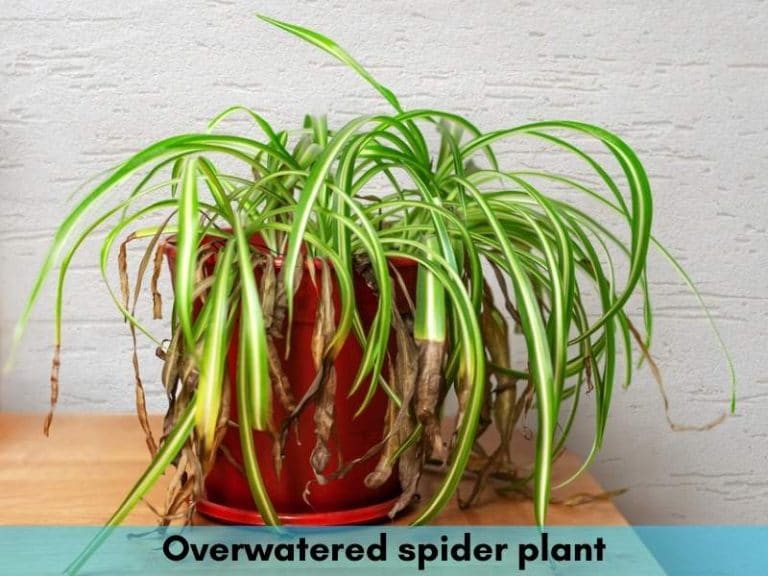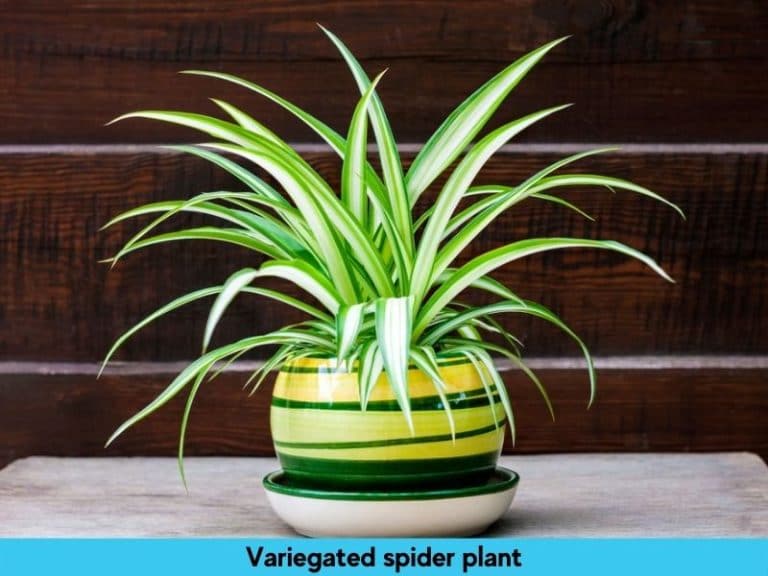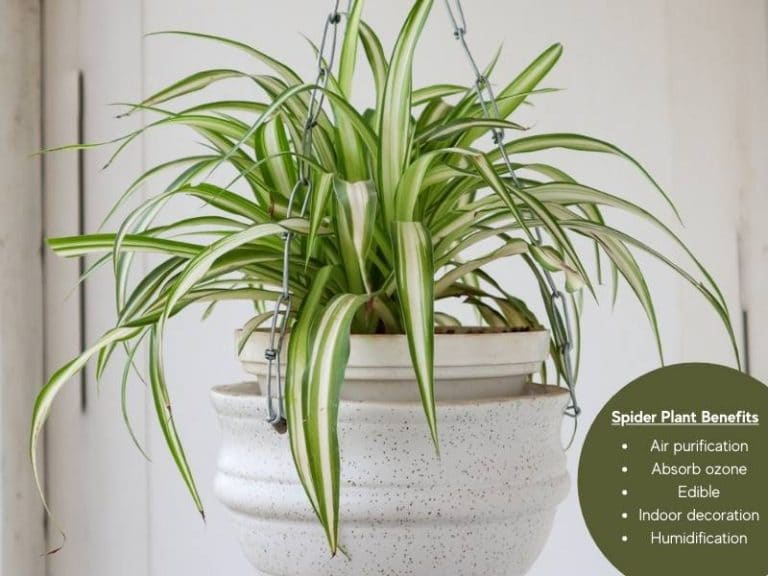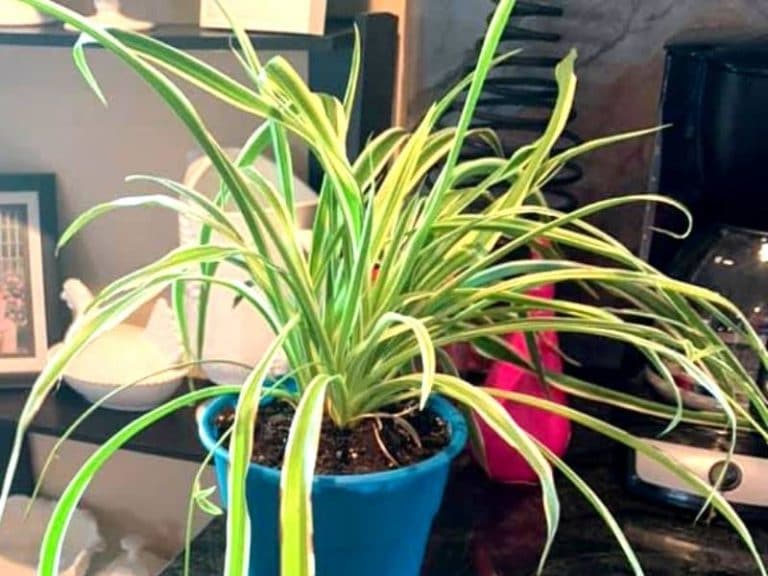Stop Brown Tips on Spider Plants: Causes and Solutions
Spider plants (Chlorophytum comosum) are easy and pleasant to grow, especially in hanging baskets because of their trailing growth. One major sign of a problem is when leaves start to turn brown at the tips and edges.
Brown spider plant tips are caused by overwatering, underwatering, fungal disease, or fertilizer burn. Treat the plant by cutting off the brown tips, treating root rot, and then repotting with a fresh potting mix. Move the plant to a shaded place and water it lightly until it recovers.
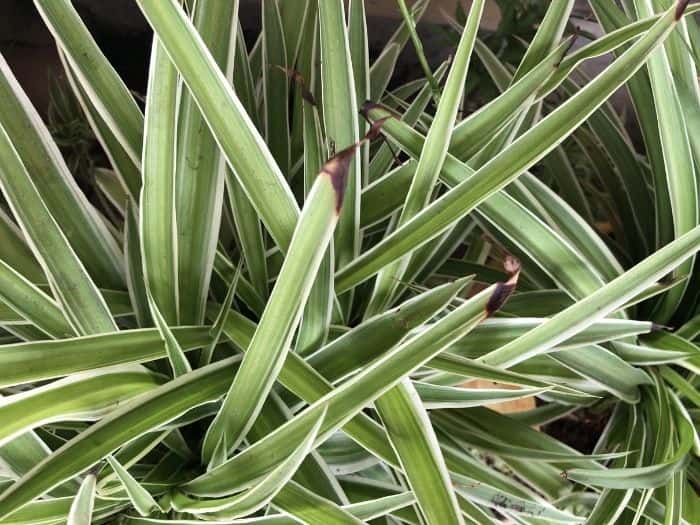
If the brown-black leaf tips are caused by excess fertilizer or chlorine in the soil, flush out the excess chlorine and fluoride salts from the soil to stop the spider plant from turning brown.
Why does my spider plant have brown tips?
Brown tips can appear on spider plant leaves, generally at the very tip of the leaf. The brown tip might be small or extend along the length of the leaf. In severe situations, brown tips can spread from one leaf to the next, making the entire plant appear ill.
Here’s a summary of the causes of brown leaf tips on a spider plant.
| Cause | Fix for brown tips |
| Overwatering | Water correctly and allow the soil to dry out in between waterings. |
| Excess salts in the soil | Flash out the salts and water with distilled water regularly. |
| Overexposure to sunlight | Move the plant to a spot with bright indirect light. |
| Low humidity | Mist the plant or run a humidifier in the room to fix dry air problems. |
| Plant diseases | Treat bacterial leaf blight soon enough to stop brown leaf tips. |
| Constricted roots | Repot the spider plant in a larger pot to allow room for roots. |
1. Poor watering habits
Underwatering and overwatering your spider plant are two common poor watering habits that can cause brown tips on the plant.
Overwatering can cause root rot, where the roots get soggy, limiting oxygen supply and causing them to decay. When the roots rot, they lose their ability to absorb water and nutrients from the soil, causing the leaves to brown and droop. Overwatering also causes yellowing in spider plants.
On the other hand, underwatering develop brown tips on spider plants due to dehydration. Dehydration interferes with the nutrient supply to leaves, making them brown and dry.
The tips of the leaves are the first to show indications of browning because they are the furthest away from the roots.
2. Salt build-up in the soil
Fertilizing is essential for your spider plant, providing it with nutrients. However, over-fertilizing can lead to excess salt build-up in the soil, which can cause the tips of the leaves to turn brown and dry.
The accumulation of salts in the soil draws water away from the roots, leading to dehydration and brown tips.
Note: Too much fertilizer makes spider plants weak and susceptible to pests and diseases.
3. Chlorine + fluoride salts
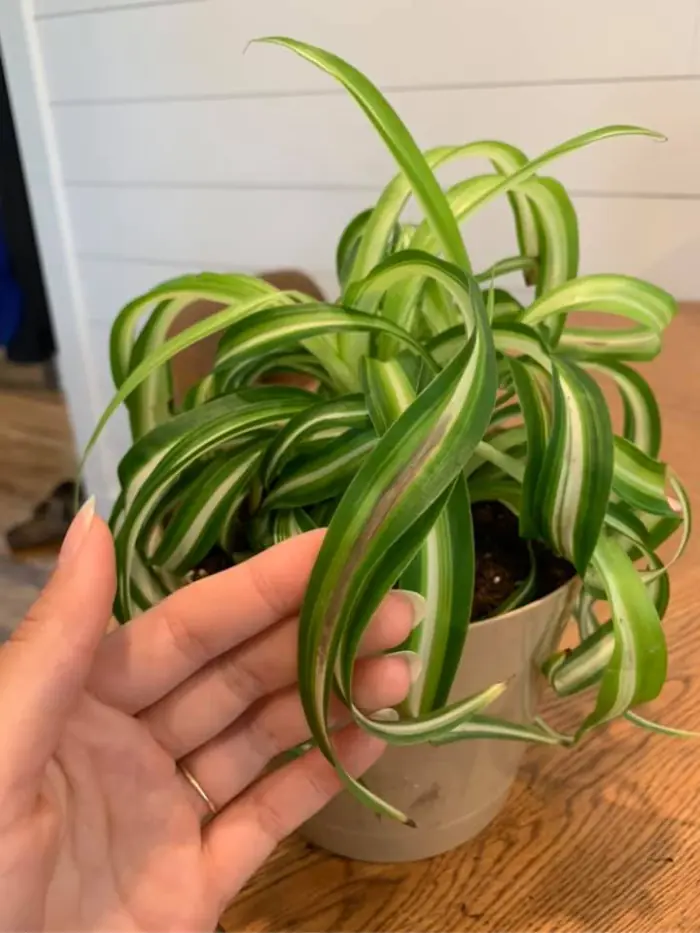
Many times, the browning tips on your spider plant might be because you water them with tap water. Tap water contains chlorine and fluoride salts. When you use it to water your plant, the salts accumulate in the soil over time.
In high quantities, fluorine and chlorine will mess up and inhibit numerous plants’ natural processes, such as photosynthesis, causing the tips of the leaves to dry.
4. Overexposure to sunlight
Another common cause of brown tips on spider plants is overexposure to direct sunshine. The plant thrives in bright, indirect light. Too much direct sunshine is harmful and can lead to the leaf tips to brown.
The sun’s extreme heat and light can dry out the leaves, causing the plant to dehydrate. Furthermore, the sun’s ultraviolet (UV) radiation can cause sunburn on the leaves, which might result in brown tips.
5. Diseases
Bacterial leaf blight might be why your spider plant leaves are discoloring. It usually starts as light spots at the tip of the leaves, which then gradually turn brown.
If the leaves of your spider plant turn brown to black, it is a sure sign of bacterial leaf spot disease. It occurs when the room is too hot and too humid. Remove the damaged leaves and stop watering the plant from above.
6. Constricted roots
This is common in potted spider plants where the container they are grown in is too small for the roots. Spider plants with constricted roots have difficulty reaching the nutrients and water they require to survive. This might cause the plant to get stressed and grow brown tips on its leaves.
It can also happen to spider plants grown in gardens, mainly those planted in heavy clay soils that compact after watering.
7. Low humidity
Spider plants thrive in humid areas, and when the air is too dry, their leaves might dry up and become brown at the tips.
Low humidity causes the plant to lose moisture quicker than it can absorb from the soil, resulting in dehydration and stress.
How to fix brown tips on spider plant
The first thing to do to keep a spider plant healthy is to grow it in bright indirect light, allow the soil to dry out between irrigations, and maintain medium-level humidity in the house. Treat any diseases and pests to prevent leaf discoloration.
Apart from growing the plants in their ideal conditions, there’s a lot you can do to fix brown tips on spider plants.
Here’s how:
1. Cut the affected areas
Trimming the brown tips helps to keep the problem from spreading throughout the plant. You may encourage new growth and help the plant’s recovery by removing damaged leaves.
Eliminating rotting roots helps prevent root rot, a serious issue for spider plants.
Pro tip: Use garden scissors or pruning shears to do the job perfectly. Remember to sterilize your garden scissors or pruning shears using alcohol or any other available sterilizer to reduce the risk of spreading diseases from one plant to another.
2. Water properly
The rule of thumb is to only water when the topsoil is dry. Put your index finger into the soil of the spider plant. If the first two inches of your finger come up dry, that indicates that your plant needs watering.
Water the plant after every seven days during the season of active growth but don’t flood them. After that, water it whenever the soil is dry.
3. Use fluoride-free water
Using fluoride-free water can prevent the buildup of harmful chemicals in the soil and protect your plant from further damage. Switching to distilled or rainwater can also help reduce the effects of excess minerals or salts that can cause brown tips.
If you suspect that the browning of the leaves is because of excess salts, flush the soil with distilled water regularly.
Here’s how to flush the soil with high fluoride content:
- Pour a few bottles of water into the planting pot.
- Wait for the water to drain out.
- Once the water has drained out, flush and drain it repeatedly.
Rainwater is the most recommended water to flush the soil.
5. Move your plant under a shade.
Ensure you place your spider plant in a shaded area where it will receive moderate light if grown outside.
If it is grown indoors, place your spider plant where it can access indirect or filtered sunlight, such as near the east-facing window.
6. Repot the plant.
Replace the small pot with a bigger pot to give the plant more room for the roots to grow.
Here’s how to repot your spider plant:
- Gently remove the plant from its current pot.
- Trim and flush the roots.
- Transfer it to a larger pot.
Before you change the pots, ensure that the new pots have good drainage holes simply because spider plants don’t do well in wet soil for a long time.
7. Improve room humidity.
During the winter season, relocate the plant to a room with high humidity. But when the summer season arrives, you could maintain the high humidity levels by using a humidity tray or ensuring timely watering.
Pro tip: To give your spider plant a humidity boost, you can place your plant in the bathroom when you are taking a hot shower!
Conclusion
To fix brown tips on spider plants, ensure proper watering and light conditions, avoid over-fertilizing, and use fluoride-free water. With just a bit of care, your spider plant will continue flourishing for years bringing beauty and health benefits to your home as a natural air purifier.
References + Resources
- Karen Russ and Al Pertuit, PhD, Clemson University Home and Garden Information Center: Spider Plant – Watering and Fertilizer
- Dr Leonard Perry, Horticulture Professor Emeritus, University of Vermont: Easy Houseplants – Spider Plant Fertilizer Problems
- Colorado State University Extension: Plant Talk – Spider Plant Care


